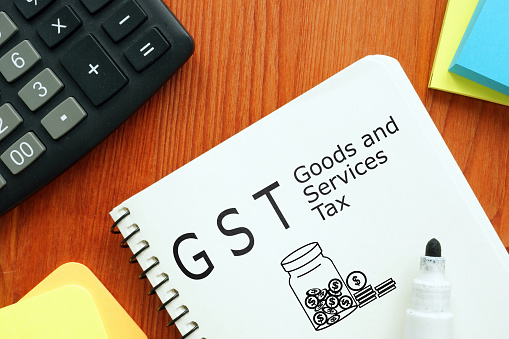GST stands for Goods and Services Tax. It is a comprehensive indirect tax that is levied on the supply of goods and services in India. The GST regime has replaced several indirect taxes such as Value Added Tax (VAT), Central Excise Duty, Service Tax, and various other state-level taxes.
Under the GST regime, taxes are levied at every stage of the supply chain, and the final tax liability is borne by the end consumer. The GST system has been designed to ensure that there is no cascading effect of taxes, that is, taxes are not levied on taxes.

GST has been implemented with the aim of simplifying the tax structure, promoting ease of doing business, and increasing tax compliance. It has also led to the creation of a unified market in India, as it has eliminated the barriers that existed due to different tax structures in different states.
In India, the GST regime has been implemented in four categories. The four categories of GST are as follows:
- Central Goods and Services Tax (CGST): CGST is a tax levied by the central government on the supply of goods and services within a state. The revenue collected through CGST is shared between the central government and the state government.
- State Goods and Services Tax (SGST): SGST is a tax levied by the state government on the supply of goods and services within the state. The revenue collected through SGST is retained by the state government.
- Integrated Goods and Services Tax (IGST): IGST is a tax levied by the central government on the supply of goods and services between different states in India. It is collected by the central government and then shared between the central and state governments.
- Union Territory Goods and Services Tax (UTGST): UTGST is a tax levied by the central government on the supply of goods and services within the union territories of India. The revenue collected through UTGST is shared between the central government and the respective union territory government.
In addition to these categories, there are also specific rates and exemptions for certain goods and services, such as luxury goods, essential commodities, and exports.
Benefits of the GST regime:
GST (Goods and Services Tax) has several benefits for the economy, businesses, and consumers. Some of the significant advantages of GST are as follows:
- Simpler Tax System: GST has simplified the tax system by replacing multiple indirect taxes with a single tax. This has reduced the complexity and compliance cost of businesses and also made it easier for consumers to understand and pay taxes.
- Boost to the Economy: GST has provided a boost to the economy by promoting the ease of doing business, reducing the cost of production, and increasing the competitiveness of businesses. It has also reduced tax evasion and improved tax collection, which has increased revenue for the government.
- Reduced Tax Burden: GST has reduced the tax burden on businesses by allowing input tax credit (ITC) on taxes paid on inputs, which can be used to offset the tax liability on output. This has eliminated the cascading effect of taxes and reduced the overall tax burden.
- Uniform Tax Rates: GST has brought uniform tax rates across the country, which has eliminated the tax rate differences between states and reduced the tax arbitrage opportunities.
- Increased Compliance: GST has increased tax compliance by providing a transparent and efficient tax system, which has reduced the scope for tax evasion and increased the number of taxpayers.
The GST regime has created a unified market in India by eliminating the barriers that existed due to different tax structures in different states. This has led to the free movement of goods and services across the country. The GST regime is helping in the simplification and streamlining of the tax system, increasing tax compliance, and creating a more unified and competitive market in India.
Here are some frequently asked questions (FAQs) about GST (Goods and Services Tax):
Q: What are the benefits of GST?
Answer: The benefits of GST include a simpler tax system, a boost to the economy, a reduced tax burden, uniform tax rates, and increased compliance.
Q: Who needs to register for GST?
Answer: Any person or entity involved in the supply of goods and services and whose turnover exceeds the threshold limit of Rs. 20 lakhs (Rs. 10 lakhs for special category states) needs to register for GST.
Q: How is GST calculated?
Answer: GST is calculated as a percentage of the transaction value of goods and services. The GST rate varies depending on the type of goods or services and the place of supply.
Q: What is input tax credit (ITC)?
Answer: Input tax credit (ITC) is the credit that a business can claim for the GST paid on the inputs used in the production or supply of goods and services. This credit can be used to offset the tax liability on output.
Q: What is a GST return?
Answer: A GST return is a document that a registered taxpayer needs to file with the GST authorities. It contains details of the business’s inward and outward supplies, tax paid, and ITC claimed.
Q: What is the penalty for non-compliance with GST?
Answer: Penalties for non-compliance with GST range from monetary fines to imprisonment, depending on the severity of the violation.
Q: Can I claim a refund for excess GST paid?
Answer: Yes, businesses can claim a refund for excess GST paid if the input tax credit exceeds the output tax liability. Refund claims can be made through the GST portal.






